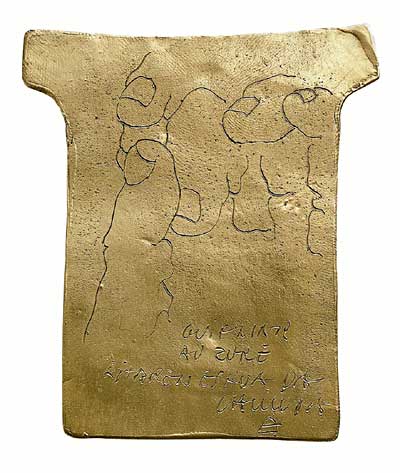Chillida: Medals
With his medals and pendants Eduardo Chillida enters the group of great sculptors who left their mark on jewellery in the twentieth century: Francisco Durrio, Julio González, Alberto Giacometti and Alexander Calder. In all these pieces one can appreciate the basic characteristics of Chillida’s sculpture: simplicity, the interplay of boundaries and their interrelationship with the human scale. Taking simplicity as his basis, Chillida eliminates the unnecessary, superfluous elements of the image. By studying boundaries he defines space. For Chillida, the boundary “is the true protagonist of space; just as the present, another boundary, is the true protagonist of time”. Chillida began making these works, intended almost exclusively for the family milieu, in the early sixties, and they are his most intimate pieces. Their formats are irregular and they are cast in silver and “aventajado” gold—19-carat gold in an alloy containing more silver than copper, which gives it its colour, as in the archaeological gold pieces of Mesopotamia or of the Etruscans or Aztecs. In his pendants and medals one can distinguish two groups: figurative medals—the cross, Saint Christopher and the Mother and Child—and medallions of an abstract character. In the former, Chillida investigates the organising relationships between line and plane; and in the latter, the repetitive relationships between discontinuity, order and rhythm, whether of planes or texture. Chillida used the old lost-wax method to make them, aided by jewellers who avoided the slightest manipulation of the wax masters carved, engraved or bent and shaped by Chillida, without using abrasives or polishing the pieces. In this way their rhythms, their texture and their calligraphy remained intact and corporeally present.



